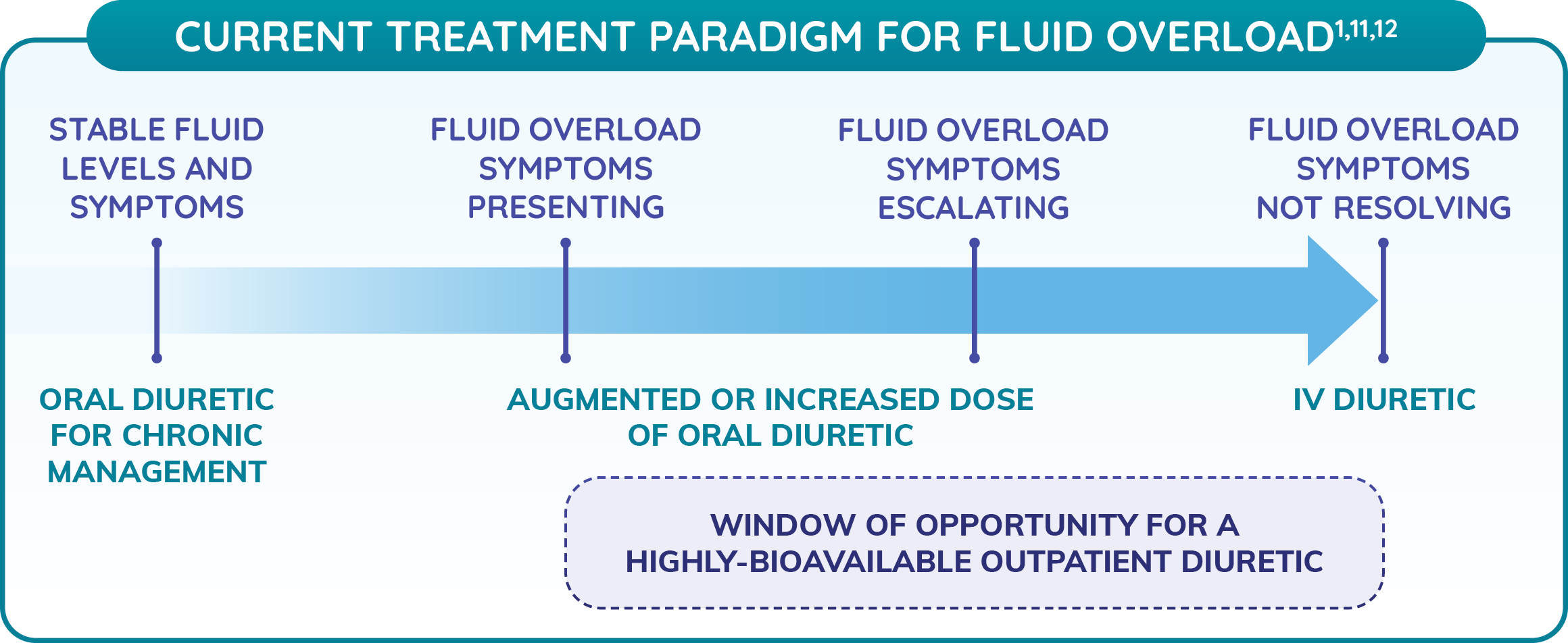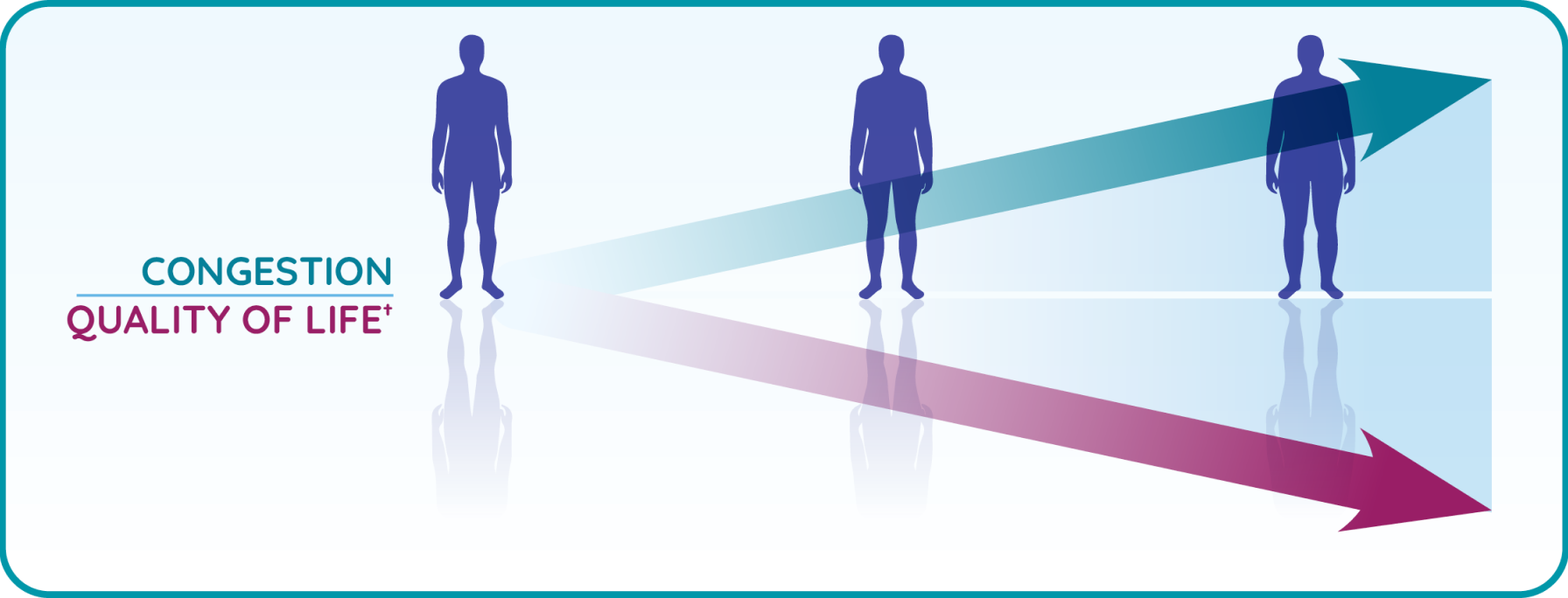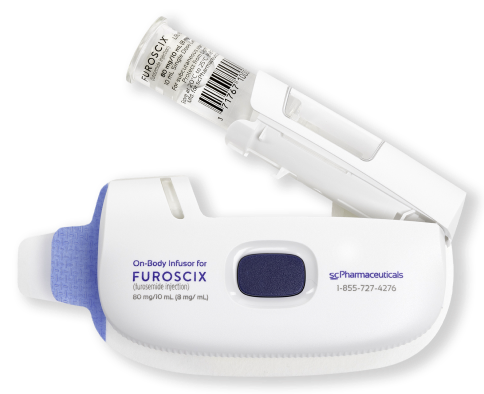
when your heart failure and cardiorenal patients are experiencing fluid overload symptoms,
from the earliest signs to worsening symptoms…
It’s time
for comfort
with the assured bioavailability of an infused diuretic and at-home symptom relief.1,2
Congestion from fluid overload is a primary cause of heart failure hospitalization,3 often with initial IV diuretic therapy as the sole treatment needed.4
In a study of 22,677 patients hospitalized for heart failure with reduced ejection fraction (HFrEF),
1.29 million patients with heart failure are hospitalized annually in the us5
heart failure is the leading cause of 30-day hospital readmission in the us6
IN HEART FAILURE, CONGESTION IS A FLUID SITUATION7
Your patients may suffer from subacute, fluctuating, yet worsening signs and symptoms of fluid overload—like edema and dyspnea—over several days to weeks.8*
Edema within the gastrointestinal tract can compromise the bioavailability of oral diuretics, further delaying symptom resolution. Typically, episodes like this would necessitate IV administration of diuretics in a clinic or hospital.1,9,10

*
A clinical study of hospitalized heart failure patients showed worsening dyspnea and edema on average 8 and 12 days prior to hospitalization (respectively).8
AS CONGESTION INCREASES, HEALTH-RELATED QUALITY OF LIFE† DECREASES13

Signs and symptoms of congestion in patients with heart failure is a strong, independent correlate of quality of life.13†
Reducing congestion in an outpatient setting was independently associated with improved quality of life.14‡
†
Kansas City Cardiomyopathy Questionnaire-12 overall summary scores, including quality of life assessment, were related to congestive signs and symptoms (partial R2 0.32).
‡
Based on a 5.1 (95% CI, 4.7-5.5) point improvement (P<0.001) in Kansas City Cardiomyopathy Questionnaire-12 overall summary scores for each 1-sign reduction in clinical signs of congestion.
As soon as your heart failure and cardiorenal patients experience signs and symptoms of fluid overload despite maintenance diuretic therapy,
it’s time for FUROSCIX.
§
Based on mean ± SD 30-minute plasma concentration of 600 (± 209) ng/mL.1
SD=standard deviation.

FUROSCIX delivers a fixed 80 mg of medication over 5 hours17:
- 30 mg in the first hour
- 12.5 mg per hour for the next 4 hours
FUROSCIX is indicated for the treatment of edema (i.e., congestion, fluid overload, or hypervolemia) in adult patients with chronic heart failure or chronic kidney disease (CKD), including the nephrotic syndrome.
FUROSCIX is not for chronic use and should be replaced with oral diuretics as soon as practical.
patients can benefit from furoscix as soon as fluid overload signs or symptoms present1,2,11,17

consider furoscix at the onset of fluid overload signs and symptoms, such as18:
Early intervention
Encourage your patients to recognize and report symptoms of fluid overload as soon as they present. This allows you the opportunity to offer them earlier at-home symptom relief.